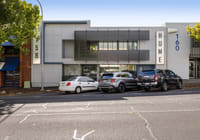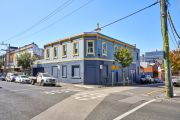
Metro project creates headaches for city tenants: report
The second phase of the NSW government’s seven-station Sydney Metro rail project is having the secondary effect of removing supply from the city’s commercial pipeline, raising rents in the process, according to a new report from Colliers International.
The latest CBD Office Research and Forecast report predicts that the massive amount of stock withdrawn as a result of the rail infrastructure project, as well as conversion of B- and C-grade buildings, would continue to be a boon to city landlords in the short to medium term.
“The CBD office market is transitioning and opportunisitic landlords have aggressively increased rents and reduced incentives as available office space diminishes,” the report states.
“The metro line will suck 57,370 square metres of space from Sydney CBD’s secondary market by the first half 2017 with an additional 90,078 square metres permanently withdrawn as B and C-grade office buildings are adapted into residential or mixed use assets by the end of 2017.”
 NSW Transport Minister, Andrew Constance stands next to plans for the new metro station at Martin Place. Photo: Peter Rae
NSW Transport Minister, Andrew Constance stands next to plans for the new metro station at Martin Place. Photo: Peter Rae
Colliers forecasts a vacancy fall from 5.6 per cent to 5.4 per cent by January 2017, with incentives to fall rapidly, particularly in the B-grade class.
“With withdrawals outstripping supply in the short term, rents will continue to grow at sustainable rates over the next few years while incentives stabilise,” the report said.
“Incentives have already taken a turn from the highs of 31 per cent to an average of 27 per cent in just six months, with expectations they’ll continue to depreciate rapidly as available stock diminishes.”
A lack of new stock being brought to market will compound the problem, according to Colliers, with only one new development in 2017 – Darling Square – which CBA has already committed to wholly.
“Over the short term, tenant demand will outweigh net supply, maintaining downward pressure on vacancy rates until 2019 when 60 Martin Place (39,409 sqaure metres) and AMP’s Quay Quarter Tower (88,000 square metres) are due for completion.”
While these A-grade buildings are in the spotlight, it’s B-grade tenants who will bear the brunt of rental increases, according to Colliers.
The secondary market recorded the highest increase in net effective rent for quarter two 2016, at 13.3 per cent, or 26.9 per cent in the year to June 2016.
Continued growth in white-collar employment was also having an impact on vacancy rates.
“A more sustainable driver of office demand is continued growth in white collar employment. This is further substantiated by increasing popularity of sub-1000 square metre tenancies,” the report stated.










